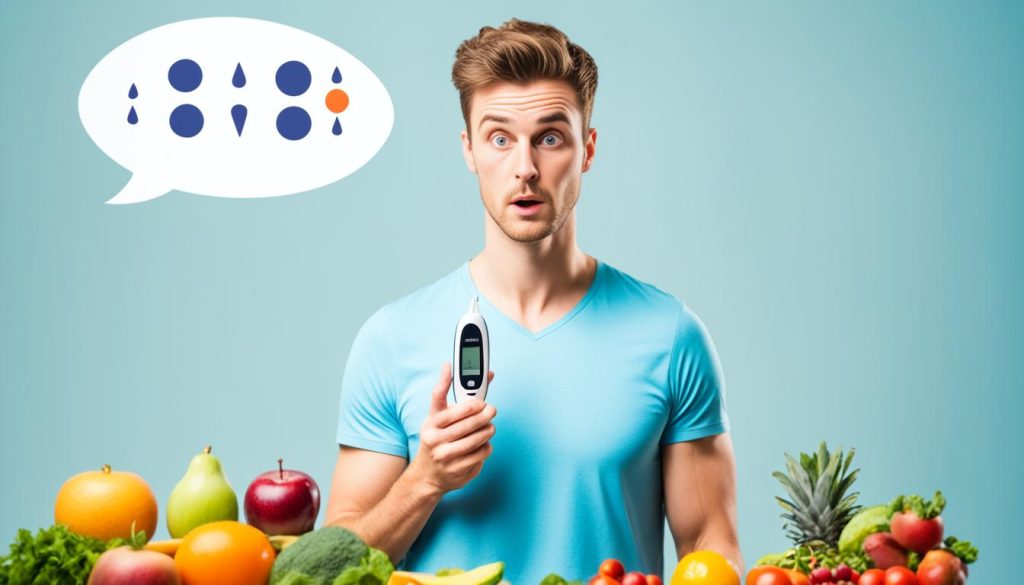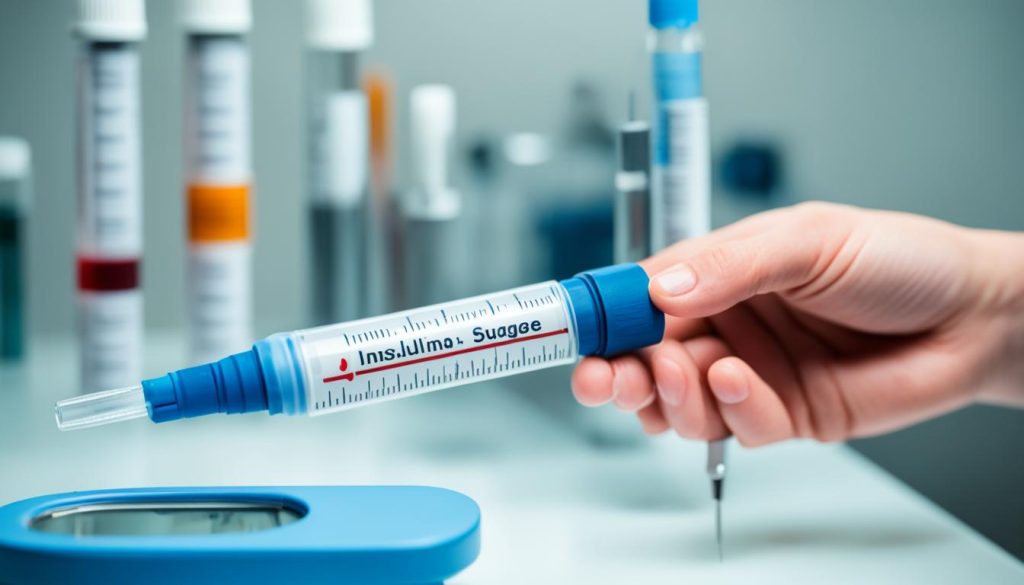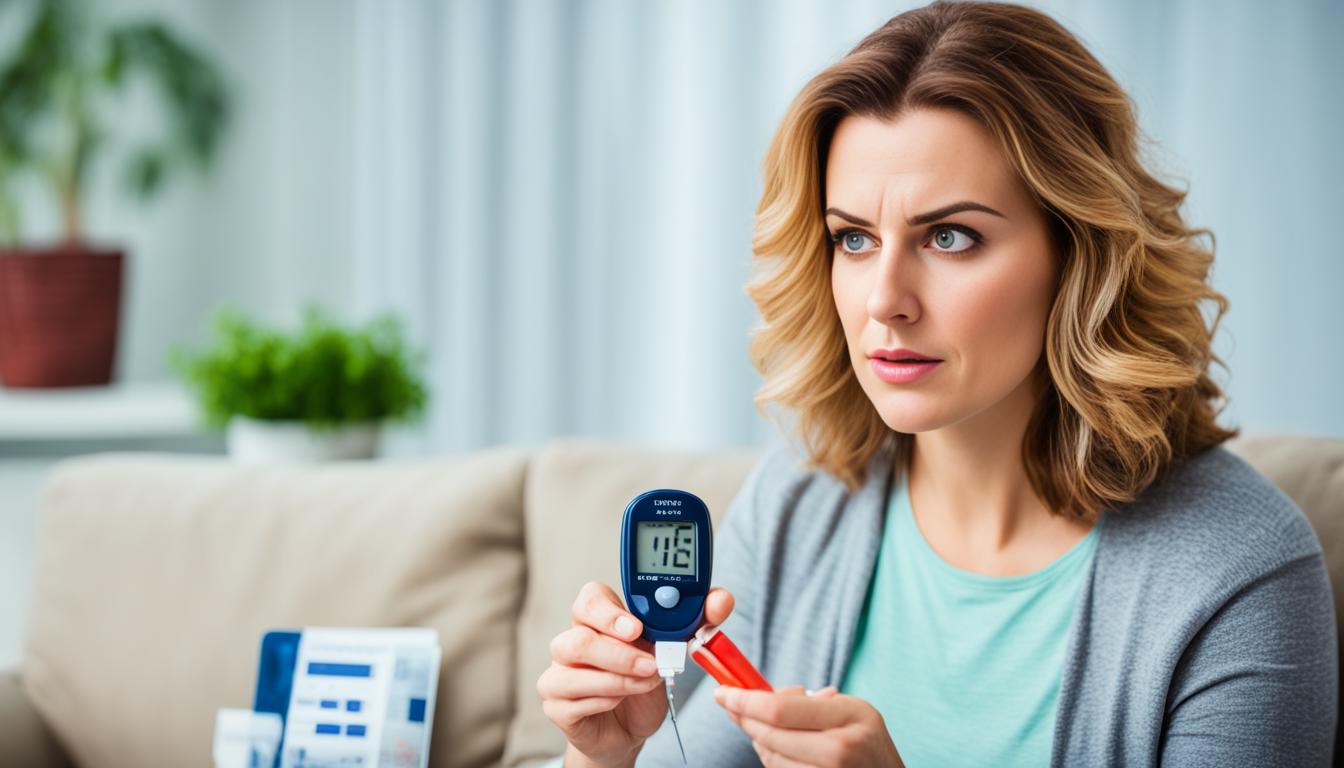Did you know that high blood sugar levels, also known as hyperglycemia, affect millions of people worldwide? In fact, it is estimated that approximately 10% of the global population lives with diabetes, and many of them experience blood sugar levels over 300 on occasion. But what exactly does it mean when your blood sugar reaches such a high level? Is it an emergency? And most importantly, what steps should you take to bring it down quickly and effectively?
In this article, we will discuss the immediate actions you can take when your blood sugar is over 300, including administering insulin and engaging in exercise. We will also provide tips for managing high blood sugar levels and knowing when to seek medical attention. Additionally, we will explore the potential complications of high blood sugar and offer strategies for effectively managing this condition. So, if you’re wondering what to do when your blood sugar is soaring, keep reading for all the information you need.
My Blood Sugar is Over 300 What Should I Do?
When your blood sugar is over 300, it is crucial to take immediate action to lower it. The quickest way to lower blood sugar is to take fast-acting insulin as prescribed by your doctor. High blood sugar emergency protocol recommends administering insulin to bring down blood sugar levels quickly.
Exercise is another effective method to lower blood sugar levels. Engaging in physical activity helps your body utilize glucose and can lead to a decrease in blood sugar levels. How to bring down blood sugar quickly? Exercise, such as walking or cycling, can help improve insulin sensitivity and lower blood sugar levels.
However, it is important to note that in severe cases, such as experiencing symptoms of diabetic ketoacidosis (DKA), it is necessary to go to the emergency room. Diabetic ketoacidosis is a potentially life-threatening condition that requires immediate medical attention. How to bring down blood sugar quickly? In emergency situations, it is crucial to follow the high blood sugar emergency protocol and seek medical care promptly.
Immediate Actions Checklist for High Blood Sugar:
- Take fast-acting insulin as prescribed by your doctor
- Engage in physical activity, such as walking or cycling
- Follow the high blood sugar emergency protocol
- Seek medical attention in cases of severe symptoms or diabetic ketoacidosis

Remember, it is advised to call your doctor for instructions on administering insulin and for advice on whether to seek emergency medical care. By taking immediate actions, you can effectively manage high blood sugar levels and minimize the risk of complications associated with hyperglycemia.
Lowering Blood Sugar with Insulin
Administering insulin is a crucial component of high blood sugar treatment. If your blood sugar is over 300, it is important to take the prescribed dose of rapid-acting insulin as directed by your healthcare provider. By doing so, you can effectively lower your blood sugar levels and prevent potential complications.
After administering insulin, it is essential to monitor your blood sugar levels regularly. Check your levels approximately 30 minutes after taking insulin to ensure that they are gradually decreasing. This step helps you determine whether the insulin is effectively bringing your blood sugar down without causing it to drop too low, a condition known as hypoglycemia.
Please note that it is important to exercise caution when administering correction insulin. It is advisable to wait at least three hours before administering additional correction doses to prevent insulin stacking, which can lead to hypoglycemia. Always follow the guidance of your healthcare provider regarding insulin administration and dosage adjustments.
Remember, effectively managing your high blood sugar levels through insulin administration plays a vital role in your overall diabetes care. By working closely with your healthcare team and adhering to their recommendations, you can better control your blood sugar levels and reduce the risk of complications associated with hyperglycemia.

Lowering Blood Sugar through Exercise
Exercise plays a vital role in managing high blood sugar levels. Engaging in physical activity can effectively lower blood sugar levels by making your body more sensitive to insulin. It also facilitates the delivery of glucose to your muscles, resulting in a decrease in blood sugar levels. Regular exercise is particularly beneficial for managing high blood sugar at home.
Walking is a simple yet effective exercise that can help lower blood sugar levels. By walking for just 30 minutes a day, you can make a significant impact on your blood sugar control. Walking not only aids in lowering blood sugar levels but also promotes overall health and well-being.
However, if your blood sugar is above 240 mg/dL, it is crucial to check for ketones in your urine before exercising. The presence of ketones indicates a state of elevated blood sugar and can further increase your blood sugar levels. In such cases, it is not advisable to exercise until your blood sugar and ketone levels are under control.
It’s important to customize your exercise routine according to your individual needs and consult with your healthcare team to determine the most appropriate exercise plan for you. They can provide tailored guidance based on your current health status and blood sugar levels.
Tips for Effective Exercising with High Blood Sugar:
- Consult with your healthcare provider before starting any exercise regimen.
- Choose activities you enjoy to stay motivated in the long run.
- Wear comfortable and appropriate footwear and clothing.
- Stay hydrated by drinking water before, during, and after exercise.
- Monitor your blood sugar levels before and after exercise to understand your body’s response.
- Be consistent with your exercise routine to maintain stable blood sugar levels over time.
- Consider incorporating strength training along with aerobic exercises for optimal blood sugar control.
By incorporating exercise into your daily routine and following these tips, you can effectively manage high blood sugar levels and improve your overall health.

When to Seek Medical Attention?
Blood sugar levels of 300 mg/dL or more can be dangerous. If you have two readings in a row of 300 mg/dL or more, it is recommended to call your doctor. Additionally, it is important to be aware of symptoms that indicate the need for emergency medical care.
- Presence of ketones in your urine
- Confusion
- Nausea
- Shortness of breath
- Stomach pain
- Vomiting
- Fruity-scented breath
If you experience any of these symptoms, it is crucial to go to the emergency room or call 911 promptly to prevent complications.

Diabetic Emergency Action Plan
Having a diabetic emergency action plan in place is essential for managing high blood sugar emergencies effectively. This plan should include:
- Emergency contact numbers: Ensure you have the contact information for your doctor, emergency room, and 911 readily available.
- Symptom recognition: Familiarize yourself with the symptoms that require immediate medical attention.
- Ketone testing: Understand how to test for ketones in your urine and when to seek medical care if they are present.
- Insulin dosage: Document your prescribed insulin dosage and know when to adjust it during high blood sugar emergencies.
- Emergency supplies: Have necessary supplies, such as glucose tablets or an emergency glucagon kit, easily accessible.
- Medical history and personal information: Keep an updated list of your medical history, medications, and allergies for emergency medical personnel.
By following a high blood sugar emergency protocol and having a diabetic emergency action plan, you can ensure timely and appropriate medical care during emergencies.
Complications of High Blood Sugar
Consistently high blood sugar levels can lead to various complications associated with managing high blood sugar levels. It is crucial to effectively manage hyperglycemia to minimize the chances of developing these complications and ensure overall diabetes care.
1. Nerve Damage (Diabetic Neuropathy)
One of the potential complications of high blood sugar is nerve damage, also known as diabetic neuropathy. Prolonged periods of elevated blood sugar levels can damage the nerves, particularly in the extremities, causing symptoms such as numbness and tingling, and pain. Diabetic neuropathy can impair the quality of life and require specialized management strategies.
2. Damage to Blood Vessels in the Eyes (Diabetic Retinopathy)
Uncontrolled high blood sugar levels can also lead to damage to the small blood vessels in the eyes, known as diabetic retinopathy. This condition can cause vision problems and, if left untreated, may even lead to blindness. Regular eye exams and maintaining target blood sugar levels are essential for preventing and managing diabetic retinopathy.
3. Increased Risk of Kidney Problems
Elevated blood sugar levels over prolonged periods can strain the kidneys and increase the risk of kidney problems. This includes conditions such as diabetic nephropathy, where the kidneys’ ability to filter waste and excess fluids is impaired. Close monitoring of blood sugar levels and managing high blood sugar levels effectively is vital for preserving kidney function.
4. Increased Risk of Heart Problems
High blood sugar levels can contribute to the development of cardiovascular complications, including heart disease and stroke. Excess glucose in the bloodstream can damage the blood vessels and increase the risk of plaque formation, leading to restricted blood flow. Implementing lifestyle modifications and effectively managing high blood sugar levels is crucial for reducing the risk of heart problems.
It is essential to work closely with your healthcare team to develop a comprehensive management plan for dealing with high blood sugar levels. By regularly monitoring blood sugar levels, adhering to treatment protocols, and making necessary lifestyle changes, you can minimize the risk of complications and ensure optimal diabetes care.
Tips for Managing High Blood Sugar
To effectively manage high blood sugar, it is essential to follow certain tips. These include:
- Staying hydrated: Drinking enough water throughout the day helps maintain optimal blood sugar levels. Aim for at least 8 glasses (64 ounces) of water daily.
- Following your treatment regimen: Take your prescribed medications and insulin as directed by your healthcare provider. Consistency is key in managing high blood sugar levels.
- Maintaining a balanced diet: Opt for a diet that prioritizes whole, unprocessed foods. Avoid excessive intake of sugary drinks, refined carbohydrates, and high-fat foods. Emphasize fruits, vegetables, lean proteins, and whole grains.
- Engaging in regular exercise: Physical activity plays a crucial role in managing blood sugar levels. Incorporate aerobic exercises, strength training, and flexibility exercises into your routine. Aim for at least 150 minutes of moderate-intensity exercise per week.
- Reducing stress: Stress can cause blood sugar spikes. Practice stress-reducing techniques such as deep breathing, meditation, yoga, or engaging in hobbies.
- Maintaining a consistent sleep schedule: Aim for 7-9 hours of quality sleep each night. Consistent and adequate sleep helps regulate blood sugar levels.
- Maintaining a moderate weight: If you are overweight or obese, losing even a small amount of weight can improve blood sugar control. Work with a healthcare professional to develop a personalized weight management plan.
By implementing these strategies, you can effectively manage high blood sugar levels and prevent complications associated with hyperglycemia. Remember to consult with your healthcare provider for personalized advice and guidance in managing your diabetes.
Blood Sugar Monitoring and A1C Test
Regular monitoring of blood sugar levels is an essential strategy for effective blood sugar control and hyperglycemia management. By using a blood glucose meter, you can keep track of your blood sugar levels and ensure that your treatment plan is working effectively.
Check your blood sugar levels as recommended by your healthcare provider. They will provide you with guidance on how often to monitor and what target range to aim for. Monitoring your blood sugar levels allows you to make necessary adjustments to your diet, exercise, and medication to maintain optimal blood sugar control.
Hyperglycemia management can often be challenging, and monitoring your blood sugar levels is a crucial part of the process. Regular monitoring helps in identifying patterns and trends in your blood sugar levels, enabling you to make informed decisions about your diabetes management.
If you experience severe hyperglycemia symptoms or your blood sugar level is 240 mg/dL or above, it is advisable to use an over-the-counter urine ketone test kit. This test can help determine if your high blood sugar levels are accompanied by the presence of ketones, which may require additional medical attention.
In addition to blood sugar monitoring, undergoing periodic A1C tests is essential for assessing the effectiveness of your diabetes treatment plan. The A1C test measures your average blood sugar levels over the past 2 to 3 months, providing valuable insights into your long-term blood sugar control.
Regular blood sugar monitoring and A1C testing, combined with adherence to your healthcare provider’s recommendations, will help you stay on top of your blood sugar control and effectively manage hyperglycemia.
Conclusion
High blood sugar levels can have serious implications for your health, but there are effective strategies to manage and lower them. Administering insulin as prescribed, engaging in regular exercise, and seeking immediate medical attention during emergencies are crucial steps in effectively managing high blood sugar. By following tips for managing blood sugar, such as maintaining a balanced diet and staying hydrated, you can take control of your elevated blood glucose levels.
Regular monitoring of your blood sugar levels using a blood glucose meter, along with periodic A1C tests, is essential for assessing the effectiveness of your diabetes treatment plan and managing hyperglycemia. By working closely with your healthcare provider and taking proactive measures, you can reduce the risk of complications associated with elevated blood glucose levels.
Remember, hyperglycemia solutions are within reach. With the right remedies and a comprehensive approach to diabetes care, you can effectively manage high blood sugar and improve your overall well-being.
FAQ
1. Is blood sugar of 300 an emergency?
Yes, a blood sugar level of 300 or above can be considered an emergency and may require immediate medical attention.
2. What should I eat if my blood sugar is 300?
It is important to avoid foods high in carbohydrates when your blood sugar is high. Opt for fiber-rich foods, lean proteins, and healthy fats to help stabilize your blood sugar levels.
3. How can I bring down blood sugar quickly?
Taking fast-acting insulin as prescribed by your doctor and engaging in physical activity, if appropriate, can help bring down blood sugar levels quickly.
4. Should I exercise if my blood sugar is over 300?
It is generally recommended to exercise if your blood sugar is over 300, as physical activity can help lower blood sugar levels. However, it is important to consult with your healthcare provider before exercising and to monitor your blood sugar levels closely during and after exercise.
5. Can walking 30 minutes a day lower blood sugar?
Regular exercise, such as walking for 30 minutes a day, can help lower blood sugar levels over time. However, it is important to combine exercise with a balanced diet and medication management for optimal blood sugar control.




